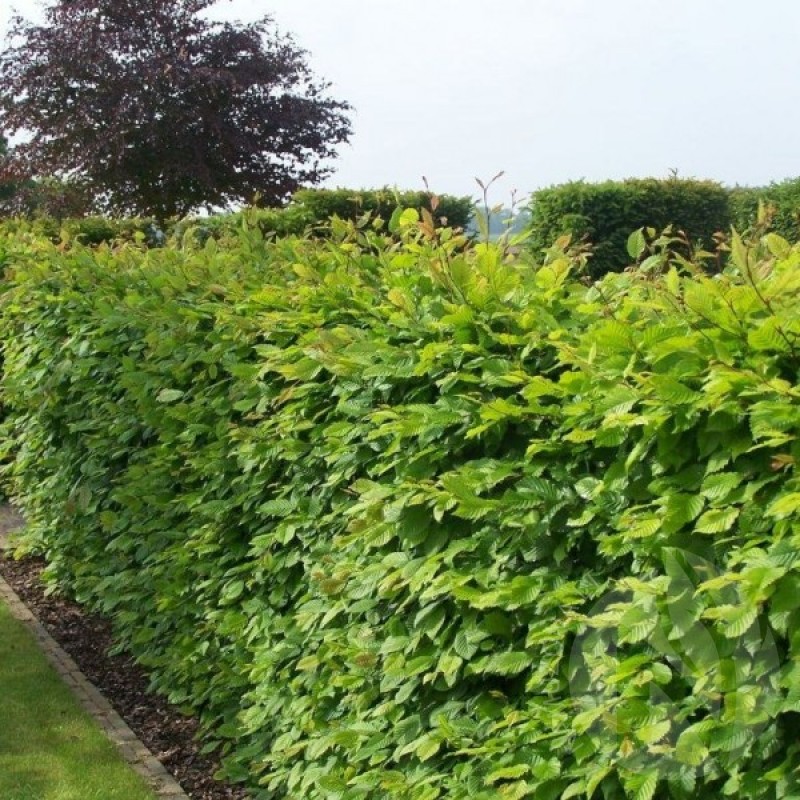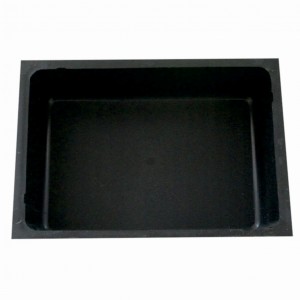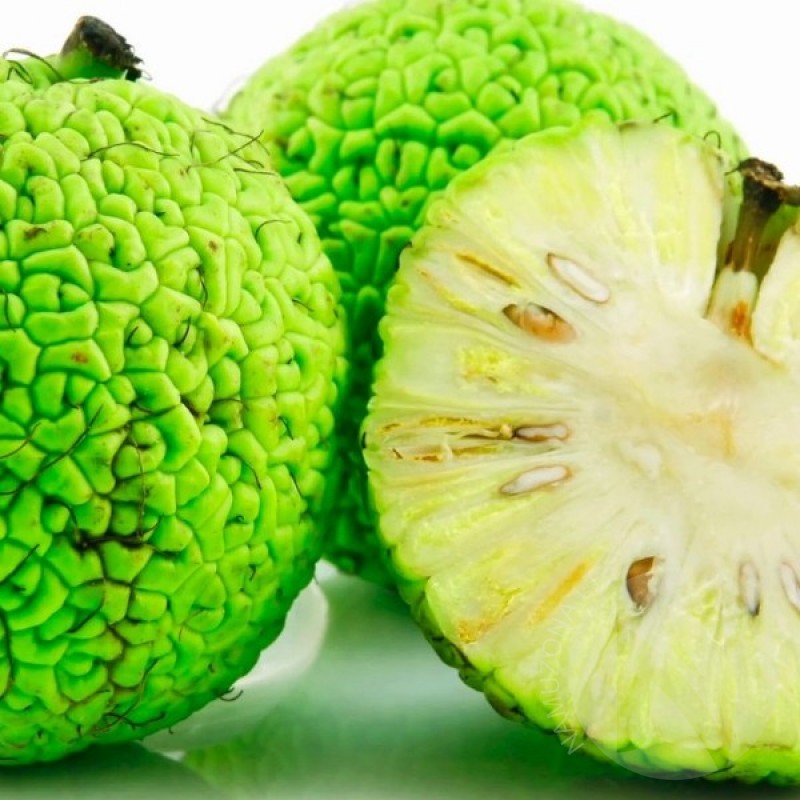
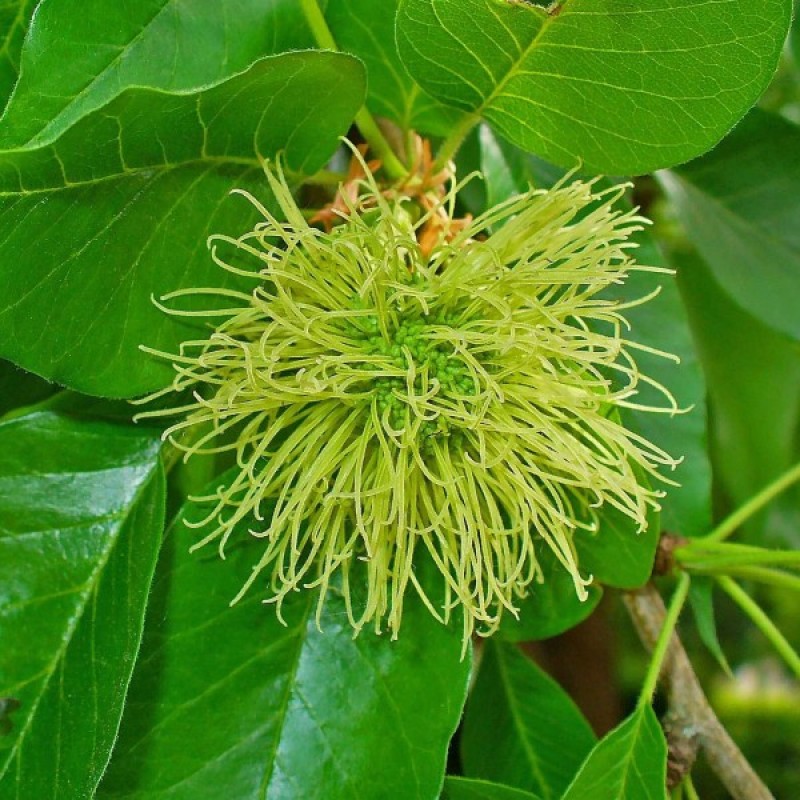
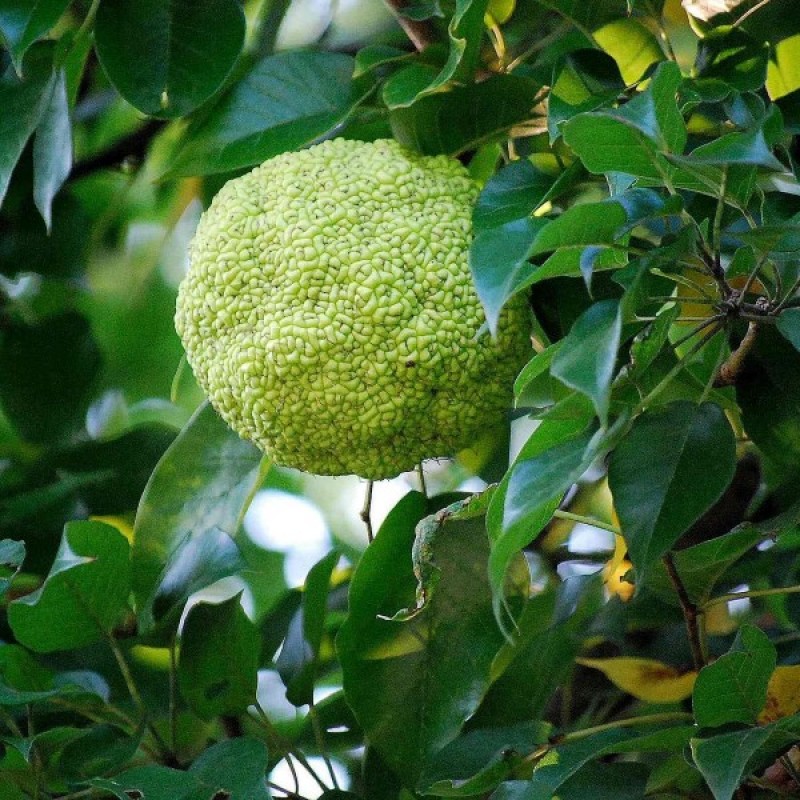
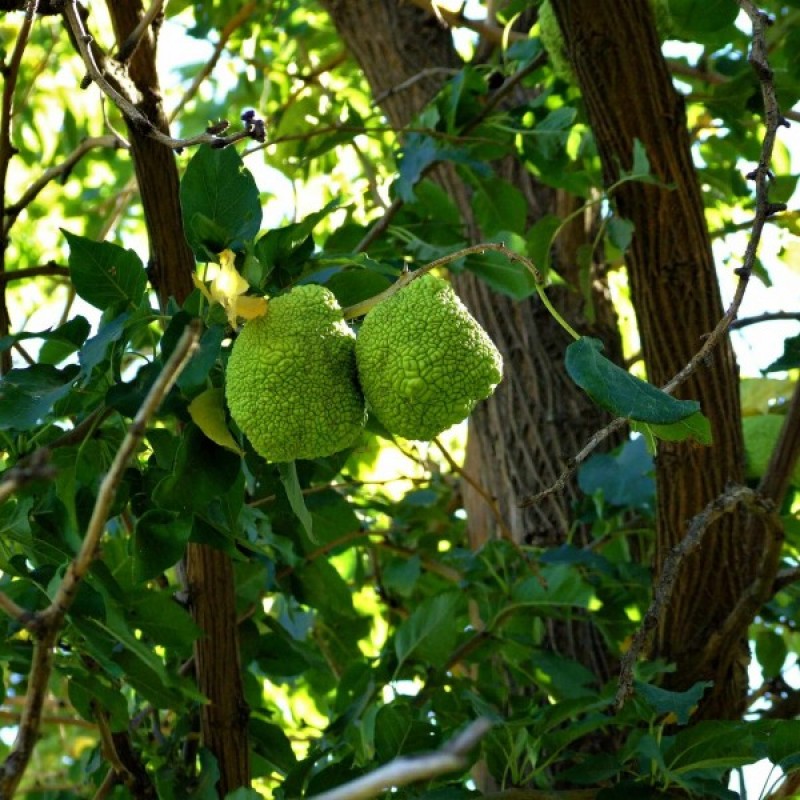
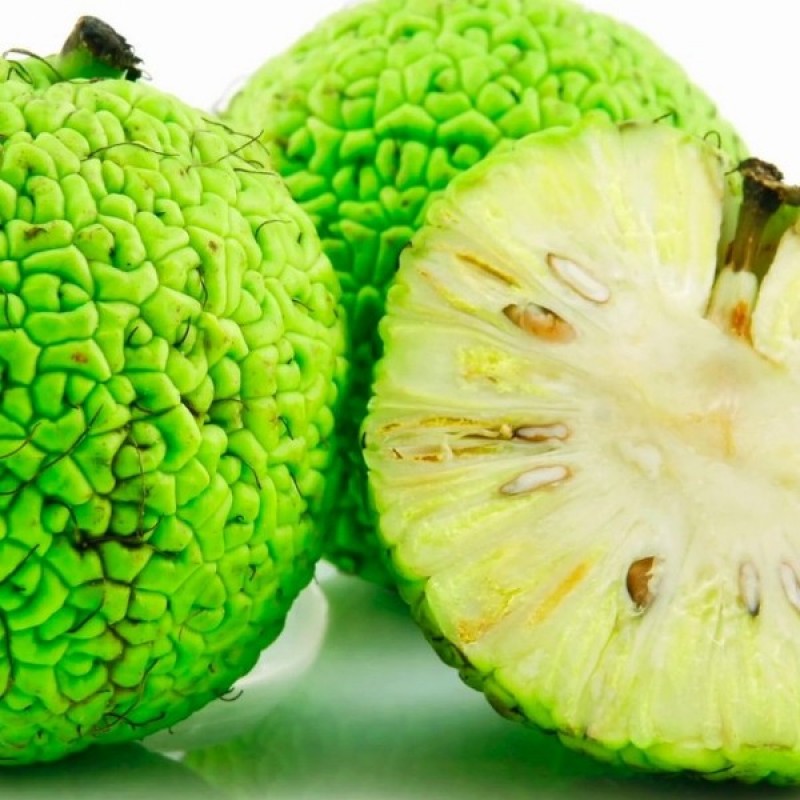
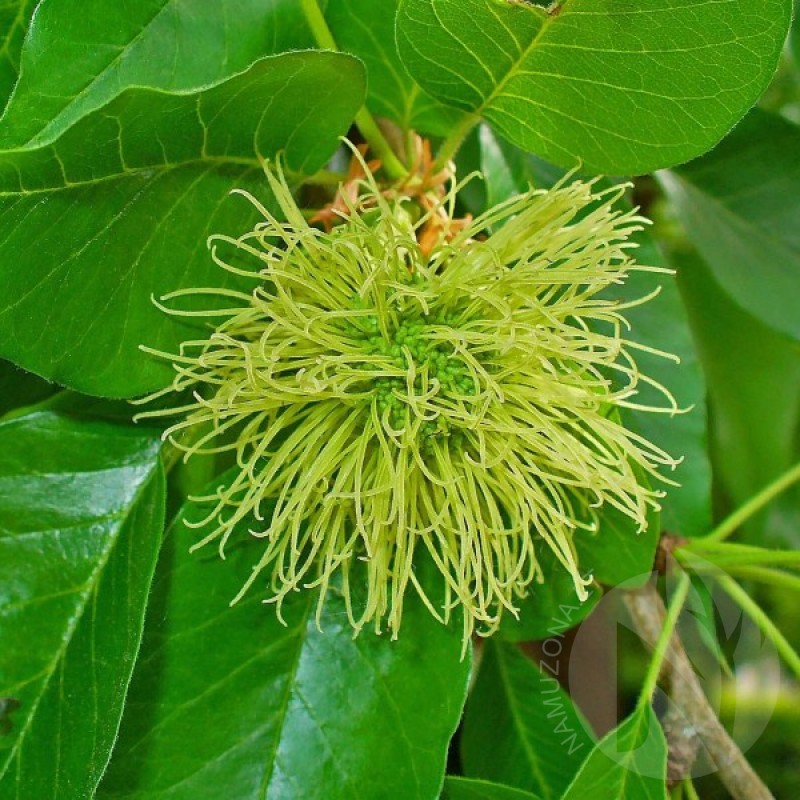
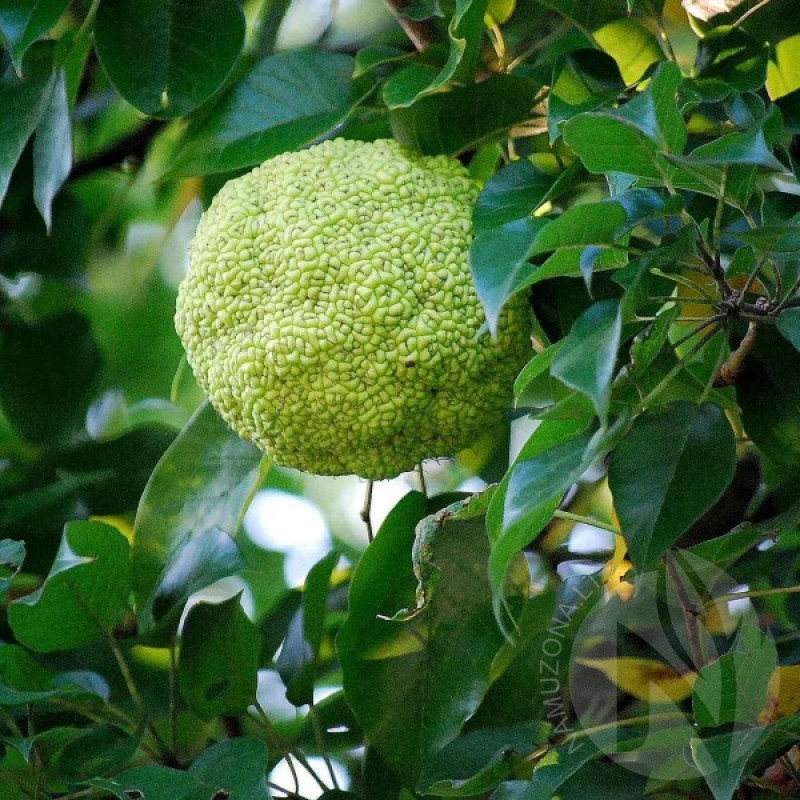
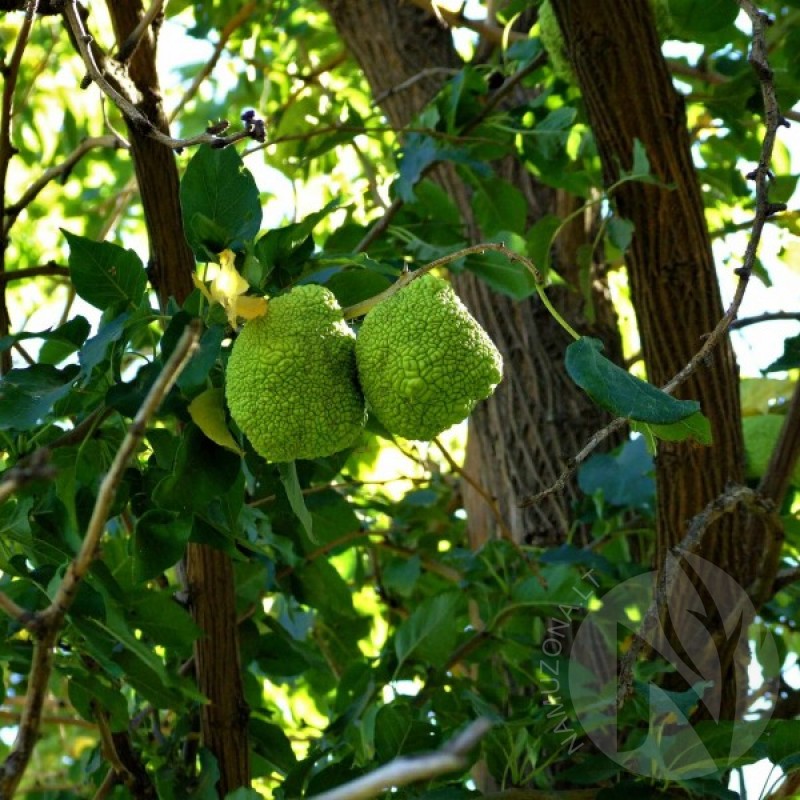
PAY ATTENTION!
All seeds (except SOLD OUT) are available for immediate shipping and will be dispatched within 1-2 business days.
INFORMATION NEEDED? PLEASE CONTACT US NOW!
The large, warty, round fruits of Osage orange are heavy and dangerous when they start thudding to the ground in fall.
Deeply fissured, yellowish gray-brown bark covers the broad, strong trunk of this tree and conceals its bright orangish yellow heartwood. When broken the stems emit a strong, acrid smell and milky sap. The new stems of younger trees have vicious thorns. Its ovate leaves alternate on the stem and have tapered, acute tips. In fall they turn shades of yellowish green. The trees are dioecious, which means that each tree produces either male or female flowers. Both male and female flowers small and greenish yellow. The female blooms are round and fuzzy and mature into green warty fruits that are round and often called “monkey balls.” The hard fruits are inedible and emit a milky sap if broken. As they age, they will shatter to release their seeds.
Trees planted in open areas with full sun develop the most pleasing canopies. This is a tough tree that’s quite drought tolerant once established and will withstand a broad range of soil types with average drainage. Like most floodplain trees, it can withstand occasional flooding at the rootzone. It has few pest and disease problems and requires little to no maintenance—aside from the cleanup of fruits from female trees. Male trees can be planted in park, open lawns and even make great street trees. Female trees should not be planted where children play or pedestrians frequent.
Genus - Maclura
Species - Pomifera
Common name - Osage Orange
Pre-Treatment - Required
Hardiness zones - 4 - 9
Height - 25'-60' / 7.60 - 18 m
Plant type - Tree
Vegetation type - Deciduous
Exposure - Full Sun, Partial Sun
Growth rate - Medium
Soil PH - Acidic, Neutral, Alkaline
Soil type - Clay, Loam, Well Drained
Water requirements - Drought Tolerant, Average Water
Landscape uses - Mixed Border, Shade Trees, Street Trees
Bloom season - Spring, Late Spring
Leaf / Flower color - Green, fall - Yellow, Green, Yellow Green / Yellow Green
GERMINATION INSTRUCTIONS
1. Soak seeds for a couple of hours in a warm water.
2. Stratification/ cold treatment: seeds need 30 days stratification period. Seeds can be stratified in dampened peat or sand, in a plastic box or bag at +2-+4C in a refrigerator. The seeds should not be frozen or in a wet medium.
3. After the stratification: sow 10 mm (3/8") deep, place the pot in indirect sunlight. Cover with clear plastic wrap to lock in heat and moisture for the seeds.
4. Water the germinating seeds just often enough to keep the soil moist.
5. Remove the plastic wrap when the seeds begin to sprout. Provide the seedlings with plenty of direct sunlight by placing them on a windowsill or taking them outdoors during the brightest part of the day.
6. Transplant the young trees to a semi-shaded area outdoors when they are about a foot tall. The soil in the area you intend to transplant the trees should be sandy and well-draining.
7. Water the trees deeply once a week. Increase the amount of water as the tree grows.
8. Fertilize the trees three times a year with an all-purpose liquid fertilizer for four years. After this period of time, your Osage Orange trees will thrive without assistance. (info source: ehow.com)
Atsiliepimų apie šią prekę kol kas nėra.
No questions about this product.

